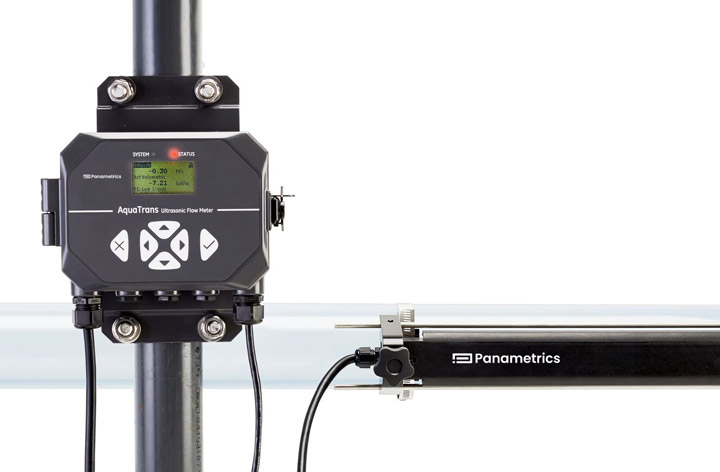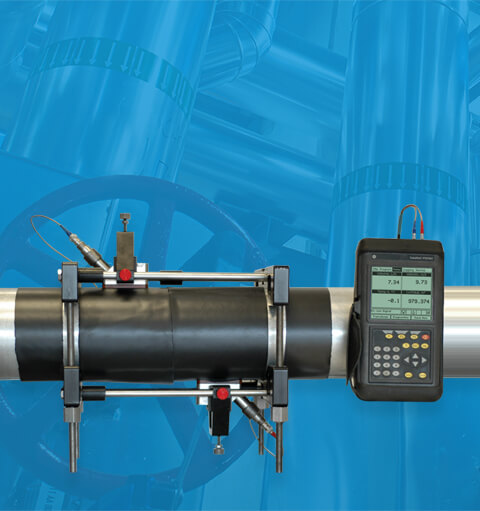The numerous benefits that can be attained through the utilization of clamp-on flow meters
When clamp-on meters are utilized, there is a favorable effect on both the total cost of flow monitoring and the efficiency of the process. Operators are able to perform their jobs in a manner that is both effective and efficient thanks to the convenience that clamp-on ultrasonic flowmeters provide in terms of their ease of use. The primary benefits of utilizing clamp-on flow meters are the meters' adaptability to a variety of settings and their low cost of operation. The following is a list of significant advantages:
Having the capacity to perform its intended functions in non-conductive liquids, gases, and steam

Non-intrusive and do not cause a pressure drop
Because it is not necessary to turn off the process or make cuts in the pipe, they reduce the amount of disruption that is caused during the process of installation. This helps them keep the process running smoothly. Clamp-on flow meters are a type of flow meter that are attached to the exterior of the pipe and can be attached to either newly installed pipes or pipes that are already in place. Time and money are saved as a result of the fact that the pipe does not have to be cut in any way for this to be possible. They can be installed at any time, even in difficult locations, and they do not cause any process contamination in the installation process.
Because there is no welding involved, there is no requirement for additional parts; as a result, there is a savings in both time and money spent on labor. In addition to this, it makes sure that there are no leaks, which prevents contamination.
The fact that there are no moving parts contributes to the product's exceptionally long lifespan.
No periodic calibration is required
When measured against the prices of various other technologies, the costs associated with theirs are relatively low.
Flow can be measured in two different pipes using a dual-opinion meter, which requires a second set of transducers but only requires one clamp-on meter to measure flow in a variety of pipe sizes and fluids simultaneously. The most common kind of flow meter is known as the clamp-on meter.
Developed to function normally in challenging settings and to withstand potentially dangerous use, a wide variety of process parameters, and extremely high temperatures.
being able to measure both high and low flow at the same time
The addition of analog inputs to temperature transmitters makes it possible to measure the energy flow rate in liquids. This is a significant advancement in the field.

The portable versions make it possible to conduct an easy and speedy check of the processes or of the meters that are already installed in-line.
How a Clamp-On Meter Is Utilized in Practice
Doppler and transit time are the two ultrasonic measurement techniques that are utilized most frequently in clamp-on flow meters. clamp-on ultrasonic flowmeters utilize a variety of other ultrasonic measurement techniques as well. Doppler meters require the presence of bubbles and/or solids in the fluid being measured in order for the ultrasonic pulses that are being transmitted to be reflected by the flow of the fluid. On the other hand, transit time meters are made up of two ultrasonic transducers that are in acoustic communication with each other and function as both the signal generators and the receivers. These transducers are in acoustic communication with each other and are in acoustic communication with each other. It is necessary to determine the amount of time that elapses between the transmission of the ultrasonic signals and their reception in both directions. This measurement must be performed in both forward and reverse directions. When there is fluid in the pipe, the amount of time it takes for pulses to travel downstream is less than the amount of time it takes for pulses to travel upstream. This is due to the fact that pulses traveling downstream are sped up by the flow, whereas pulses traveling upstream are slowed down by the flow. The difference in the two times needed to finish the journey is directly proportional to the flow rate that was being traveled at.

In general, clamp-on meters are not capable of achieving the same level of accuracy as in-line meters. This is especially true in the oil and gas industry, where in-line meters are utilized for custody transfer or fiscal measurement. Clamp-on meters are not able to achieve the same level of accuracy. This is primarily the result of signal degradation that was caused by the pipe wall and liner, in addition to the pipe's centricity and the human factors that were involved in the installation process. Despite this, clamp-ons are capable of achieving an accuracy that is better than +/- 0.5 percent, whereas the industry standard is 0.2 percent. Their exceptional reliability can be attributed, in part, to the high level of repeatability that they possess.
Because of their versatility and low cost, clamp-on flow meters are suitable for a diverse array of applications and industries. This is due to their widespread applicability, which allows them to be utilized in a variety of contexts. They have a history that can vouch for their dependability, and they are acknowledged all over the world as viable options for accurately and efficiently measuring and recording the flow of fluids and gases. Their track record can vouch for their reliability.



Comments (0)